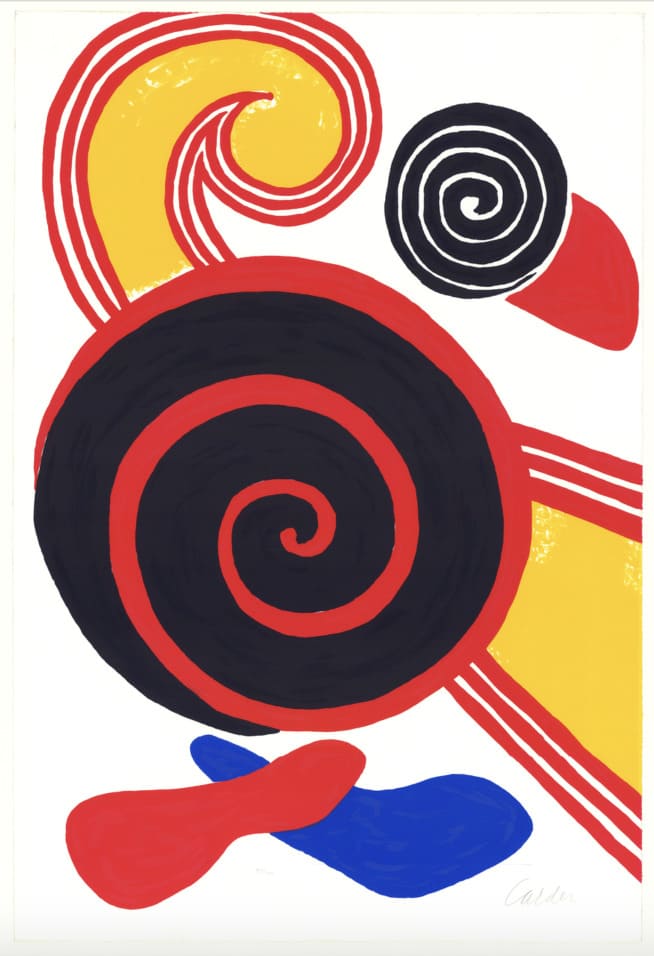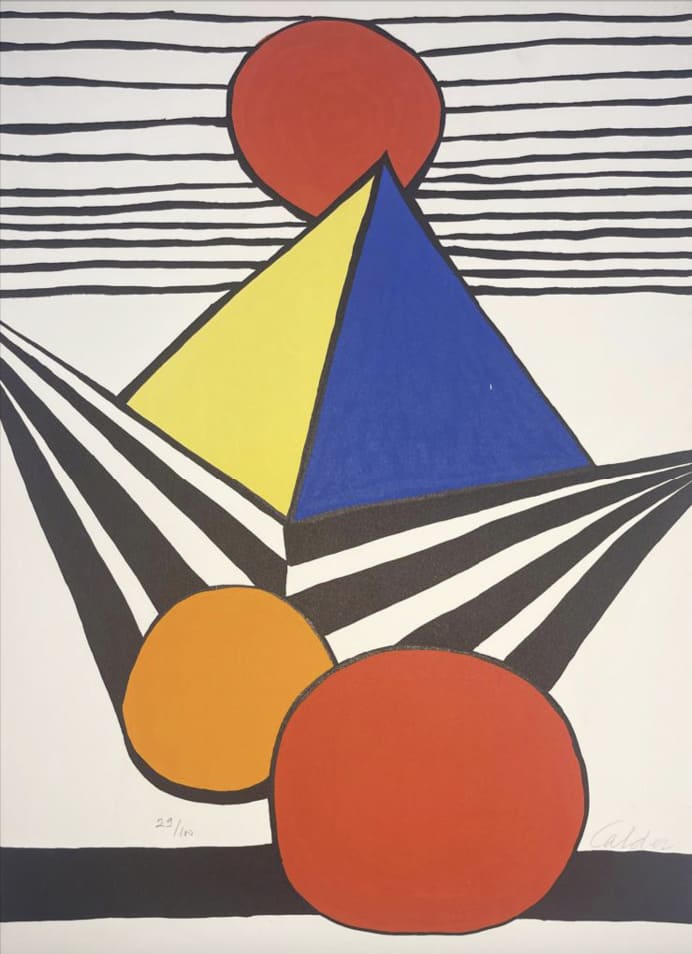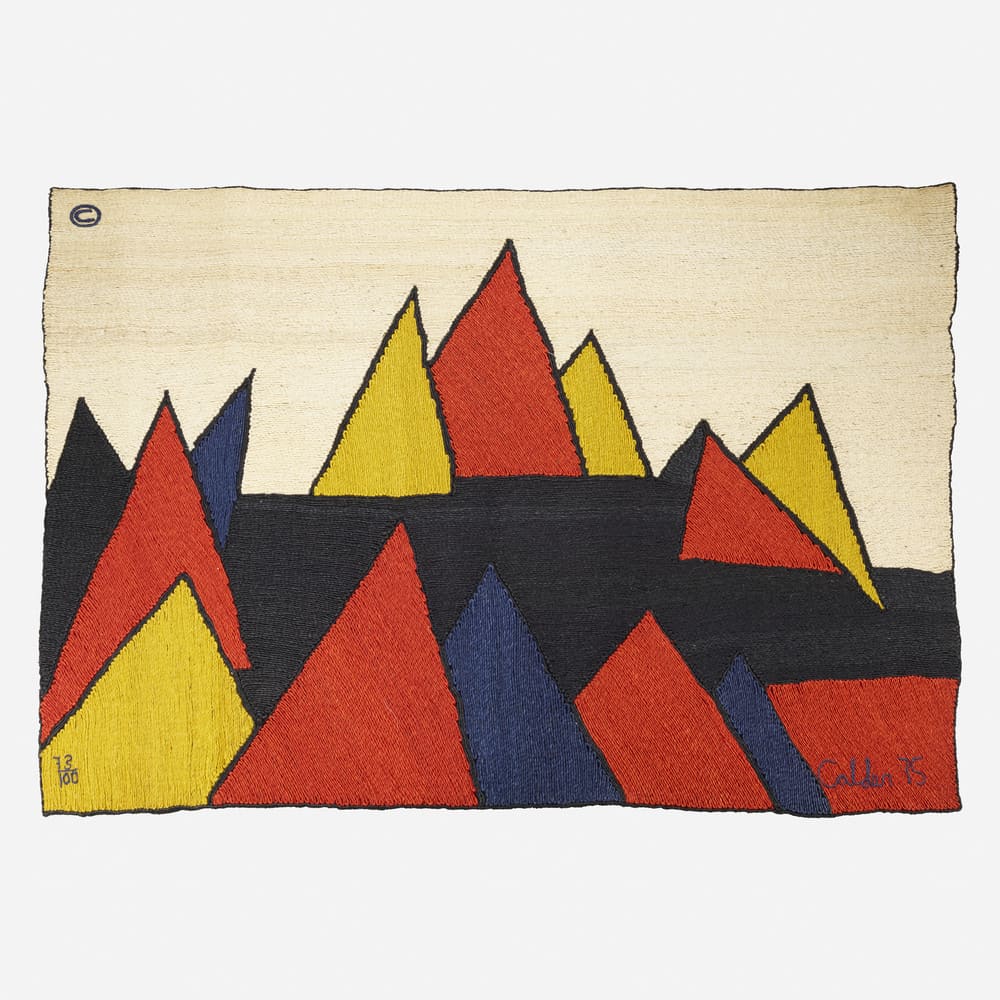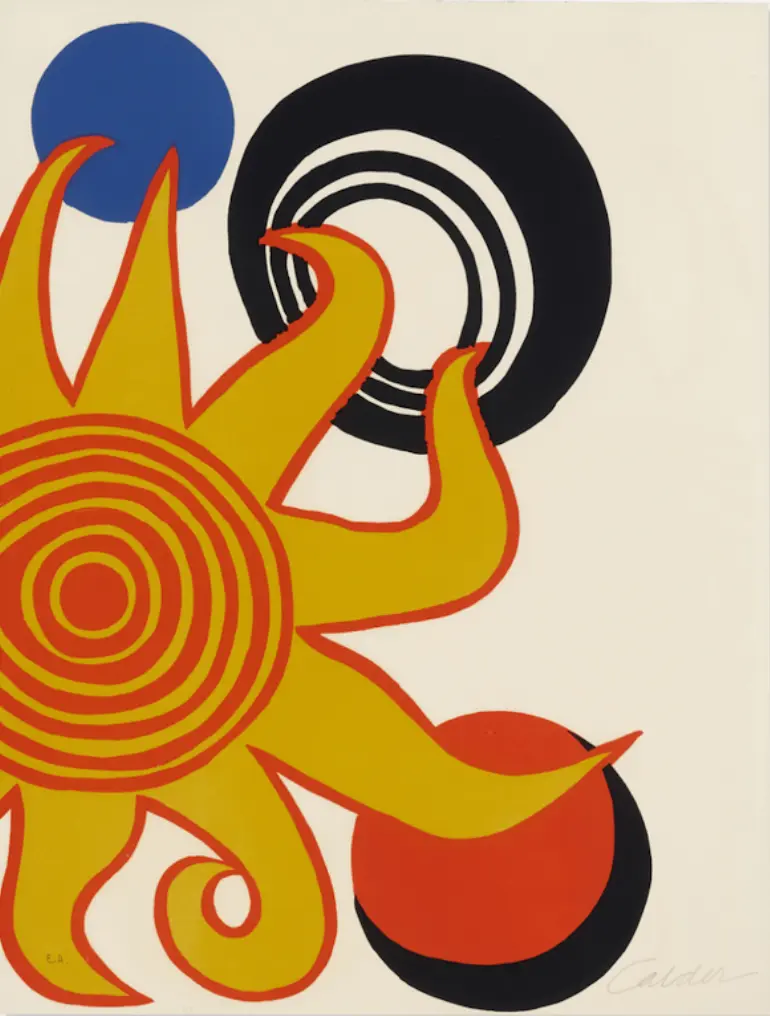ALEXANDER
CALDER
Alexander Calder, often referred to as ‘Sandy’, hailed from Pennsylvania and gained recognition as an American sculptor. He was born into an artistic lineage, with his renowned sculptor father, Alexander Stirling Calder, and a lineage of accomplished artists including his grandfather and mother. Calder’s notable contributions include the creation of wire sculptures and the
development of mobiles, a form of kinetic art that depended on precise balancing and suspension in the atmosphere. While he initially employed motors to set his creations in motion, Calder eventually shifted to exclusively utilizing air currents for this purpose.
Alexander Calder revolutionized the trajectory of contemporary art through his three-dimensional kinetic sculptures, which were famously coined “mobiles” by Marcel Duchamp. Embracing the
principles of Futurism, Constructivism, and early non-objective painting, Calder’s mobiles feature vividly hued abstract forms crafted from industrial materials, suspended in a harmonious equilibrium. Throughout his lifetime, Calder enjoyed global prominence, earning accolades like the grand sculpture prize at the 1952 Venice Biennale, where he represented the United States.
He was also honoured with the French Legion of Honour and the American Presidential Medal of Freedom, among other distinctions.
Noteworthy solo exhibitions of Calder’s work have taken place at esteemed institutions such as the Museum of Modern Art, the Rijksmuseum, the Louisiana Museum of Modern Art, and the Museo Reina Sofía. Notably, his creations consistently command significant prices in the eight-figure range on the secondary market. While Calder is predominantly celebrated for his mobiles, his diverse artistic practice also encompassed standing sculptures, paintings, set and costume design, large-scale public installations, and even jewellery craftsmanship.















